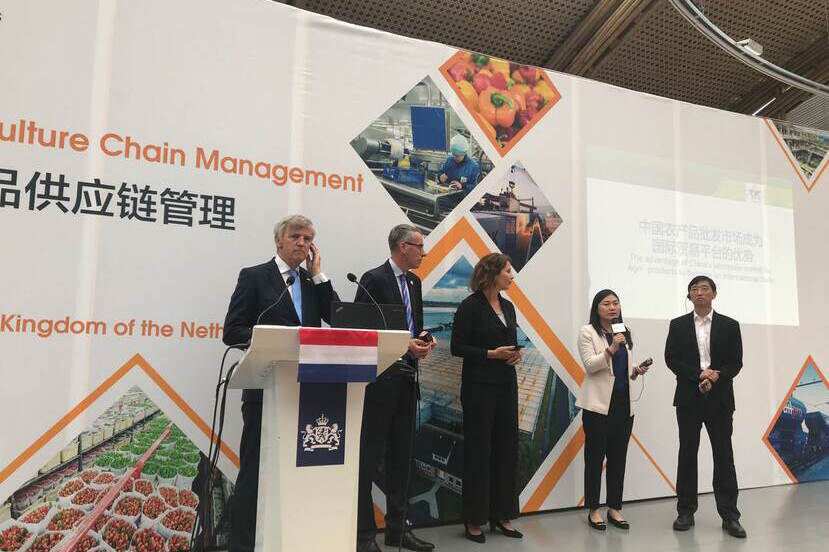Sustainable Horticulture Chain Management
Healthy and nutritious food is a major contributor to the general health and wellbeing of people. A majority of the future generations will however be living in urban environments, which poses challenges on the accessibility of quality products. Exchanging on how to find sustainable solutions and secure fresh food for everyone, is therefore of great importance today. This was the purpose of the seminar Sustainable Horticulture Chain Management which brought together officials of Agricultural ministries and research institutes from both China and the Netherlands at the 2019 Beijing Horticulture Exhibition on Monday the 17th of June.

Working together
Over the past 75 years, the Netherlands has managed to develop itself from a country that was destroyed by the second World War, into the second exporter of agricultural products worldwide. Which characteristics of the Dutch agricultural sector contributed to this success? Loek Hermans, President of the Top-Sector horticulture and starting materials, pointed at the willingness to collaborate and work together as the main driving force behind the optimization of Dutch horticultural output. This can take different shapes and forms, such as clustering companies, farmers that invest together, and the frequent and ongoing exchange between researchers, government and the private sector. Thanks to this approach, technologies have been adopted that make it possible for example, to grow tomatoes close to the consumer: in the city, with a very limited amount of water and without natural light sources. The lesson we can draw from the examples he presented is that we if we continue to work together and extend this practice to an international level, we can make our cities greener and our food of the highest quality.
Internationalization
The importance of international collaboration was also stressed by Ms. Li Lei, Deputy Director of the Science and Technology Department from the Vegetable and Flower Science Institute. Thanks to collaborations between Dutch and Chinese universities a genome research lab has been established in Beijing, which has proven to be beneficial in improving the quality and taste of vegetables. China produces a huge variety of crops, some of which grow year round. Challenges lie in optimizing the yield per hectare, which is still quite low, and reducing the environmental impact.
Responsible sector
Being world leader in exporting agricultural products comes with a responsibility, according to Inge Ribbens, who presented on behalf of the Fresh Produce Centre. Food safety and sustainability are at the core of their business, advising the sector on how to make better quality products while reducing your environmental footprint and contributing to the wellbeing of farmer, community and consumer. Ms. Ribbens stressed in her presentation that the horticultural sector in the Netherlands is committed to contribute their part to the implementation of the Sustainability Development Goals (SDG’s) of the United Nations. At the Fresh Produce Center they believe that the sector is very well capable of coming up with innovative solutions. Traditional greenhouses are seen as energy consumers, but with a few creative changes greenhouses can serve as energy producers as well. This way residual heat from the greenhouses can have added value by warming the homes of a neighborhood close by.
Chain management
While in the Netherlands a lot of food goes to waste after arriving in the super market or at the consumers home, long distances in China make the transportation one of the biggest challenges. Mr. Ma Zengjun is chairman of the China Agricultural Wholesale Market Association and has studied the logistic solutions around the world. He urges researchers to join forces in how to reduce the loss of quality between harvest and consumer in China. City farming might play a role in this, but solutions for the long distances are still needed.
Summing up we can conclude that close collaboration and continued knowledge exchange, especially between government, science and private sector, have led to healthier, tastier and more sustainable food. A few key challenges have been identified, such as the losses during transportation and after arriving at the supermarket. Technical and genomic innovations can help to better protect crops against diseases and optimize production under specific circumstances. What these circumstances are will differ from region to region, but there is no doubt that we can learn a lot from each other’s experience and ensure that future generations will have access to rich and nutritious meals.